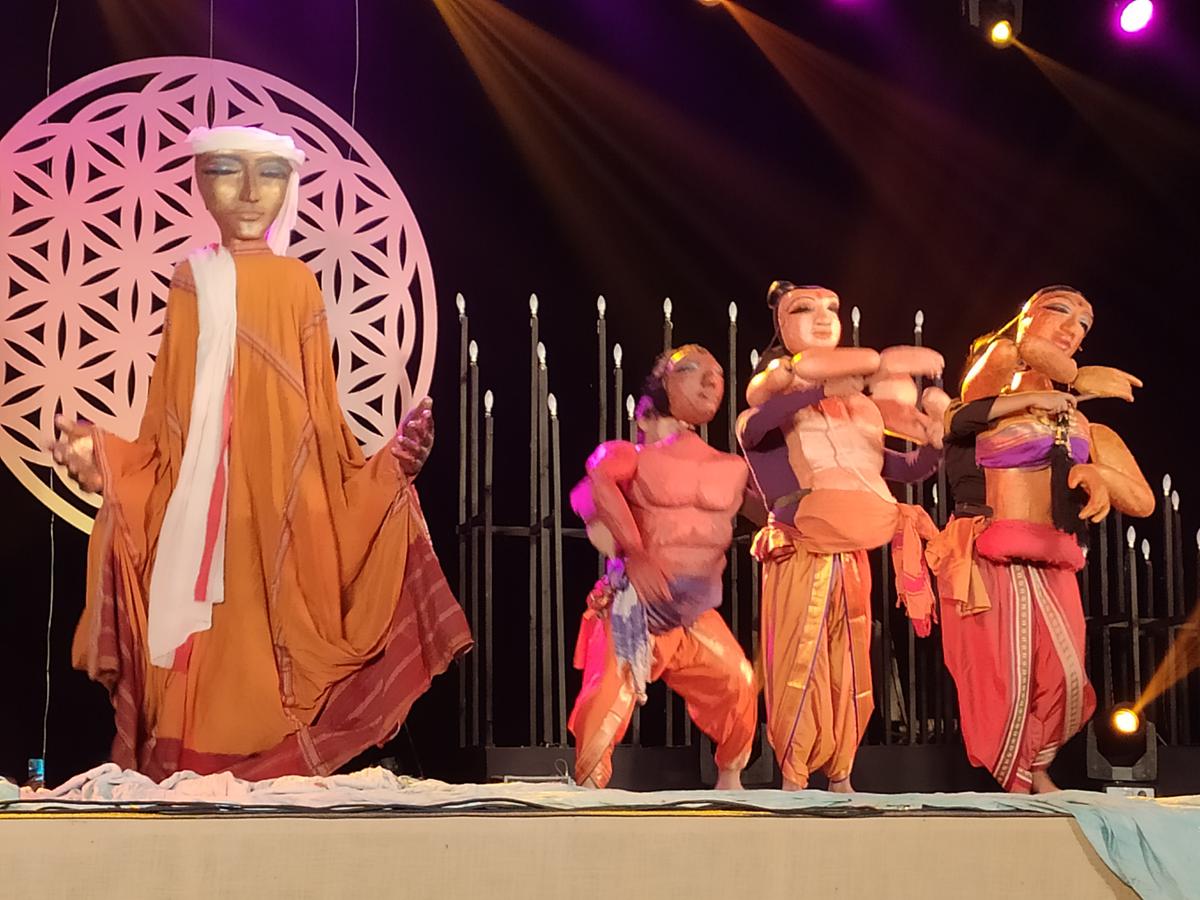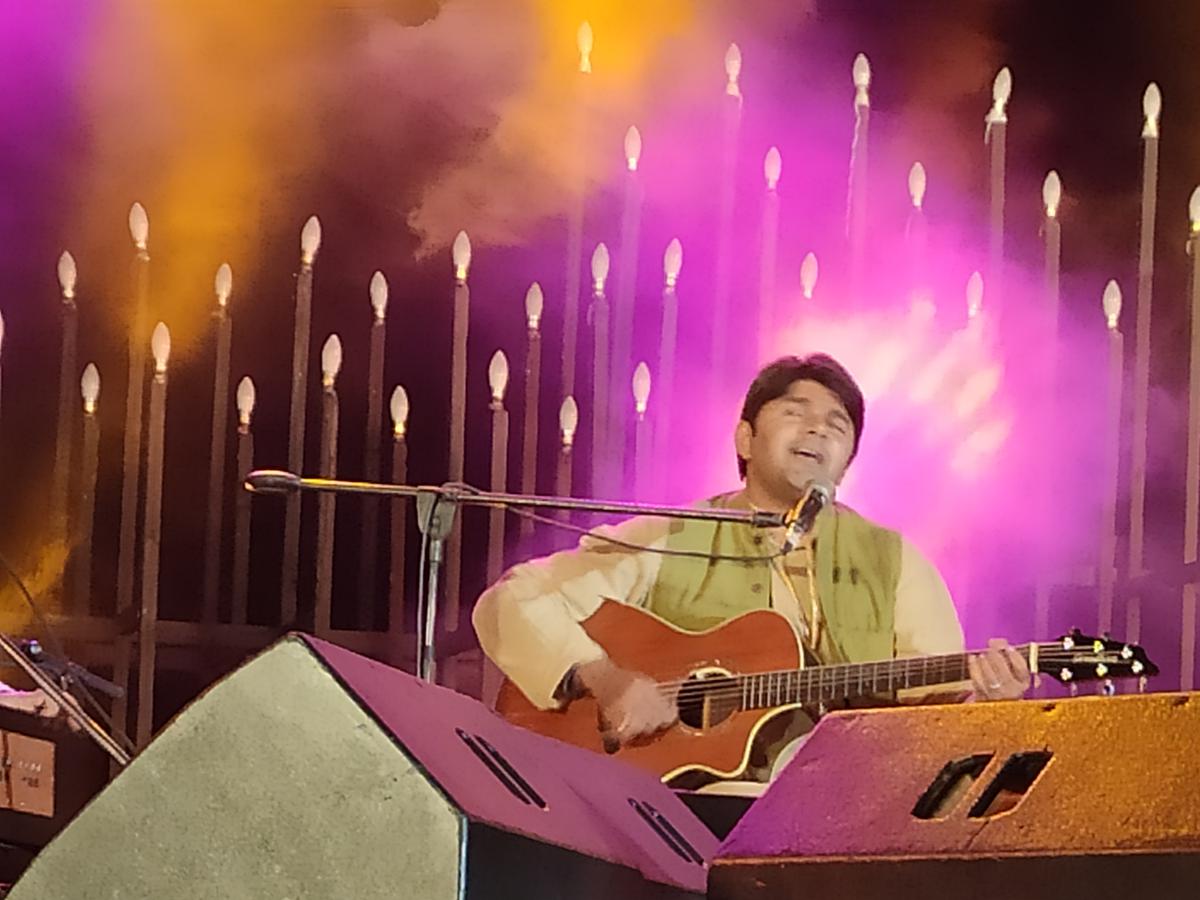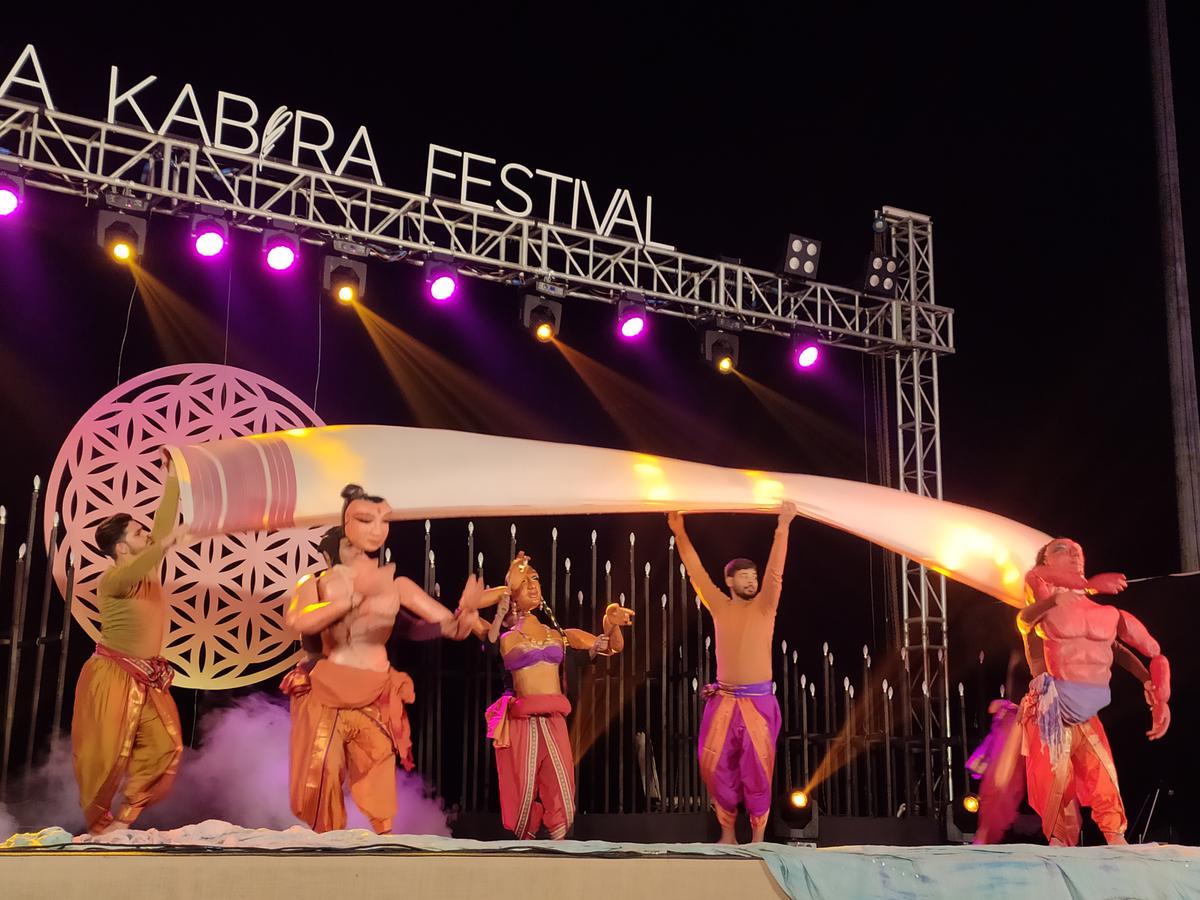Dadi Padumjee, pioneer of modern Indian puppetry, on pulling the right strings for 50 years
Dadi Pudumjee is the picture of calm though he claims to be nervous. In Varanasi for the premiere of his show Dohé Jo Mohé on Kabir and his teachings, the veteran puppeteer and Padma Shri recipient, appears to be at ease listening to soul-stirring music and engrossing conversations at Guleria Ghat, one of the two heritage venues of the sixth Mahindra Kabira Festival.
The pioneer of modern puppetry in India, Dadi, founder of Ishara Puppet Theatre, has connected puppetry traditions in India with modern puppetry by incorporating contemporary themes and introducing changes in how puppets are made, move and perform. His puppetry is a confluence of actors, music and dance. He says that since Dohé Jo Mohé is a new performance accompanied by live music, he wants to see how the audience receives it.
Leaning back on the silken cushions of the beautifully renovated 250-year-old Guleria Kothi, Dadi says that the piece on Kabir was made for the festival. “Some of the puppets are old ones from Ishara. But the 40-minute act was curated and put together with Sandeep Pillai’s Bengaluru-based Soule Band. They worked on the dohas of Kabir and the songs and they put it together in such a way that is a movement exercise, a visual treat.”

A scene from Dohé Jo Mohé, put up by Dadi Padumjee’s Ishara Puppet Theatre and Soule Band
| Photo Credit:
Saraswathy Nagarajan
Dadi feels the invitation to work on Kabir’s philospohy was interesting because “at that time we were working on a large piece called Rumiyana along with Soule Band, which will be premiered at the India Habitat Centre in Delhi on December 3. The piece is about folk tales on Rumi and will be visualised with the help of actors and puppets. There are two actors, the master and the pupil, and they connect each story.“
While reading up on Rumi and Kabir, he was struck by the commonality in their philosophy and teachings. “ Rumiyana is about a search within but all of them talk about universal love, peace, inclusivity. For me, that was the most interesting aspect. Reading one master to the other from different geographies and countries… they have so much in common,” he points out.
Rumiyana, based on the works of the mystic Sufi poet and philosopher Mevlana Jalaluddin Rumi, synergises puppets, actors, dancers, music and digital projection.
Ishara has worked with live music on one or two occasions. In 2014, for the 50th anniversary of the National Centre for the Performing Arts, Ishara was commissioned to do a show When Land Becomes Water, which were three stories on the flood based on a book by Neeta Premchand. “Music by Canada-based Airat Ichmouratov was conducted by Evgeny Bushkov and accompanied by a live performance of the Symphony Orchestra of India. Usually we use pre-recorded music as live music is not always easy, especially when doing shows of this genre,” says Dadi.
While replying to a question on the relevance of mystics such as Kabir and Rumi, Dadi goes down memory lane to share an experience of his. In 1993, Kapila Vatsyayan from the Indira Gandhi National Centre for the Arts commissioned Ishara to do a piece on Gandhiji.
Dadi did not want to repeat what was already there in print and visual media. For the show, Ishara worked with world music sans lyrics or dialogues to choreograph the 45-minute show, Images of Truth (Sathya Ke Pratiroop). “There was flash back, flash forward. It is completely non-verbal and till date, it remains one of our most popular shows. It has travelled to the US, Greece, Turkey, Egypt…At every place it has connected with the audience, young and old,” says Dadi.
Responding to an invitation from Iran, Ishara offered them several shows but they insisted on Images of Truth, as they had seen the video of the performance. “The reaction to it was fantastic. At the end of a performance, one guy came up and gave me a fat book in Farsi with all the quotations of Gandhi. He said that in junior school, they had a textbook or classes on Gandhi,” recalls Dadi.
He finds it fascinating that both the projects – on Kabir and Rumi – came at the same time. “During discussions with my group, I found that most of them know more about Kabir than me, the musicians definitely. They knew the lyrics, the dohe… they are all in their twenties.”

Soule Band’s Sandeep Pillai during the staging of Dohé Jo Mohé
| Photo Credit:
Saraswathy Nagarajan
“Even if one can conceptualise a programe, platforms to showcase those are equally important. Only then will people be able to see it,” he adds.
Going back to the time when he began pulling strings to pursue his passion for puppetry, he rewinds: “Growing up in Pune, puppetry started as a hobby that stayed with me through school and college. In 1971 I went to the National Institute of Design (NID) in Ahmedabad to study visual communication and graphic design. In those days, the late Meher Contractor used to run a puppet section at the Darpana Academy of Performing Arts in Ahmedabad. That how it [puppetry] got more formalised.”
Every evening Dadi was there and he got introduced to Indian techniques of puppetry. During that time, the Indian Space Research Organisation (ISRO) had set up a space application centre in Ahmedabad. “That was in my last year in NID. ISRO had a satellite TV instructional experiment centre. NID gave me a year of absence to follow work there,” he reminsces.

A scene from Dohé Jo Mohé, put up by Dadi Padumjee’s Ishara Puppet Theatre and Soule Band as part of the sixth Mahindra Kabira Festival
| Photo Credit:
Saraswathy Nagarajan
Dadi took up the project Hun-Han for ISRO and worked in the puppetry studio. “We were making new puppets every week for social awareness, education… It was a series meant for satellite community viewing. One thing led to the other and I did not go back to NID. By then I had got a scholarship to study the art at Marionette Theatre Institute, Stockholm, under Michael Meschke.”
After teaching stints in Stockholm and ertswhile German Democratic Republic (East Germany), Dadi returned to India in 1980. He worked with the Sree Ram Centre to set up Sutradhar Puppet Theatre, the first professional puppetry repertory in India. IN 1986, he left it and formed Ishara Puppet Theatre.
“Ishara works with puppets for social awareness, education, eclectic performances such as poetry, music …but always puppets as a means, not an end in itself. We have projects where we work with puppets and actors, with dance, with masks and then we play with with scale. We have puppets that are one-foot hight to gaint puppets, that are 12 to 14-feet in height,” he elaborates.
Later that evening, as his group Ishara and Soule Band received a standing ovation, it was clear that all his apprehensions were unfounded.
“The words of the dohe are important and interesting. So we illustrated those with water, with light, with clay, figures of fish, birds and large puppets,” says Dadi. A 12-feet puppet represented the saint-poet as dancers wearing masks interpreted the lyrics sung by Soule Band comprising Sandeep Pillai (guitar and vocals), Sarfaraaz Khan (sarangi and vocals), Deepak Marathe (harmonium and vocals) and Sumith Naik (guitar and vocals).
Indian traditions
Seven or eight states in India have good puppetry traditions. Some are doing well, some are languishing. On November 25th, Dadi was part of an online session on puppets and movement organised by Delhi-based Natya Ballet Centre. “As part of the Natya Ballet Dance Festival 2022, there was a session on puppetry and we curated four traditional puppetry groups from Karnataka, Andhra Pradesh,West Bengal and Rajasthan. The session was specifically on the movement of the puppets and dance ites in puppetry,” Dadi adds.
For all the latest Entertainment News Click Here
For the latest news and updates, follow us on Google News.
